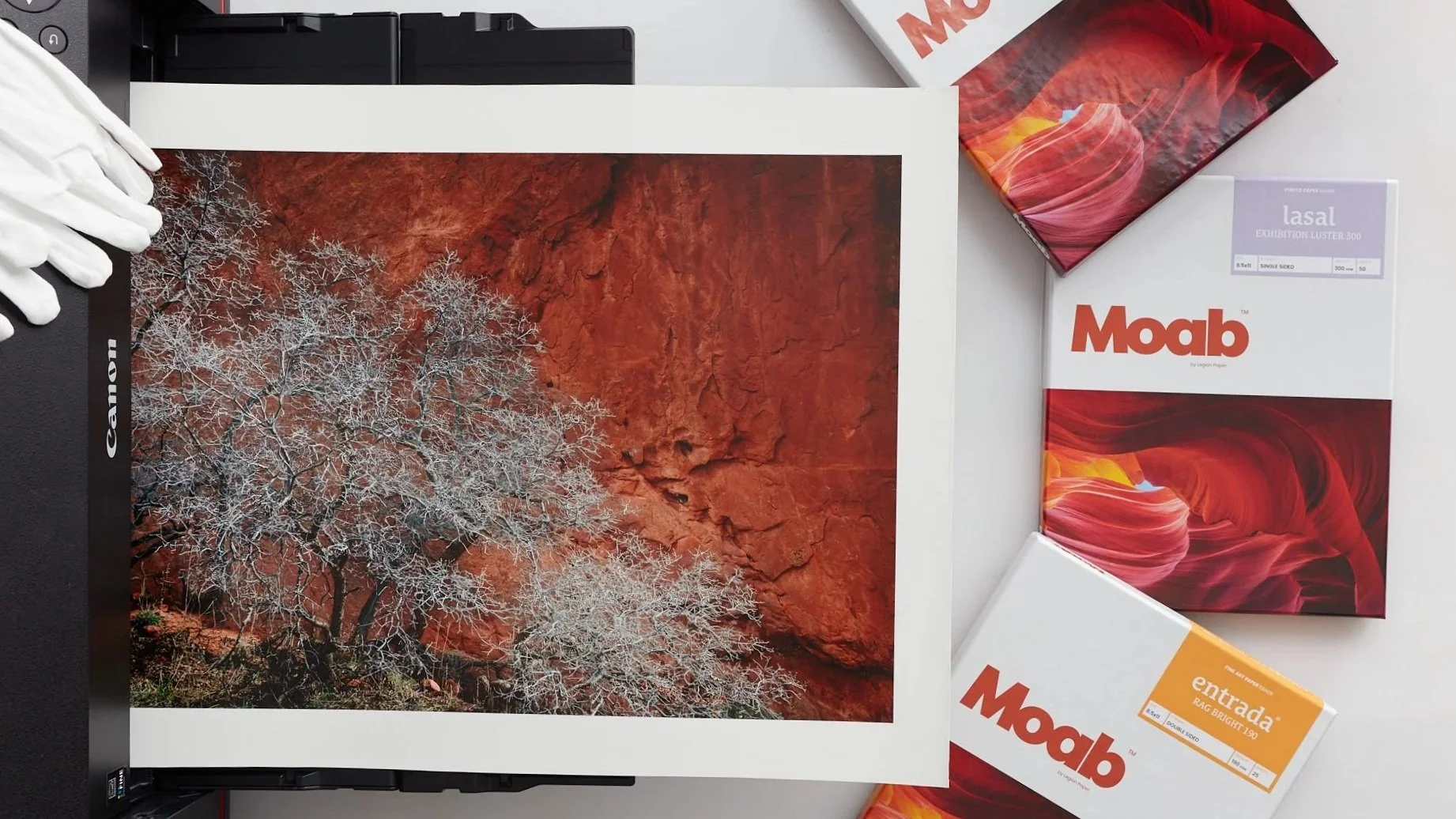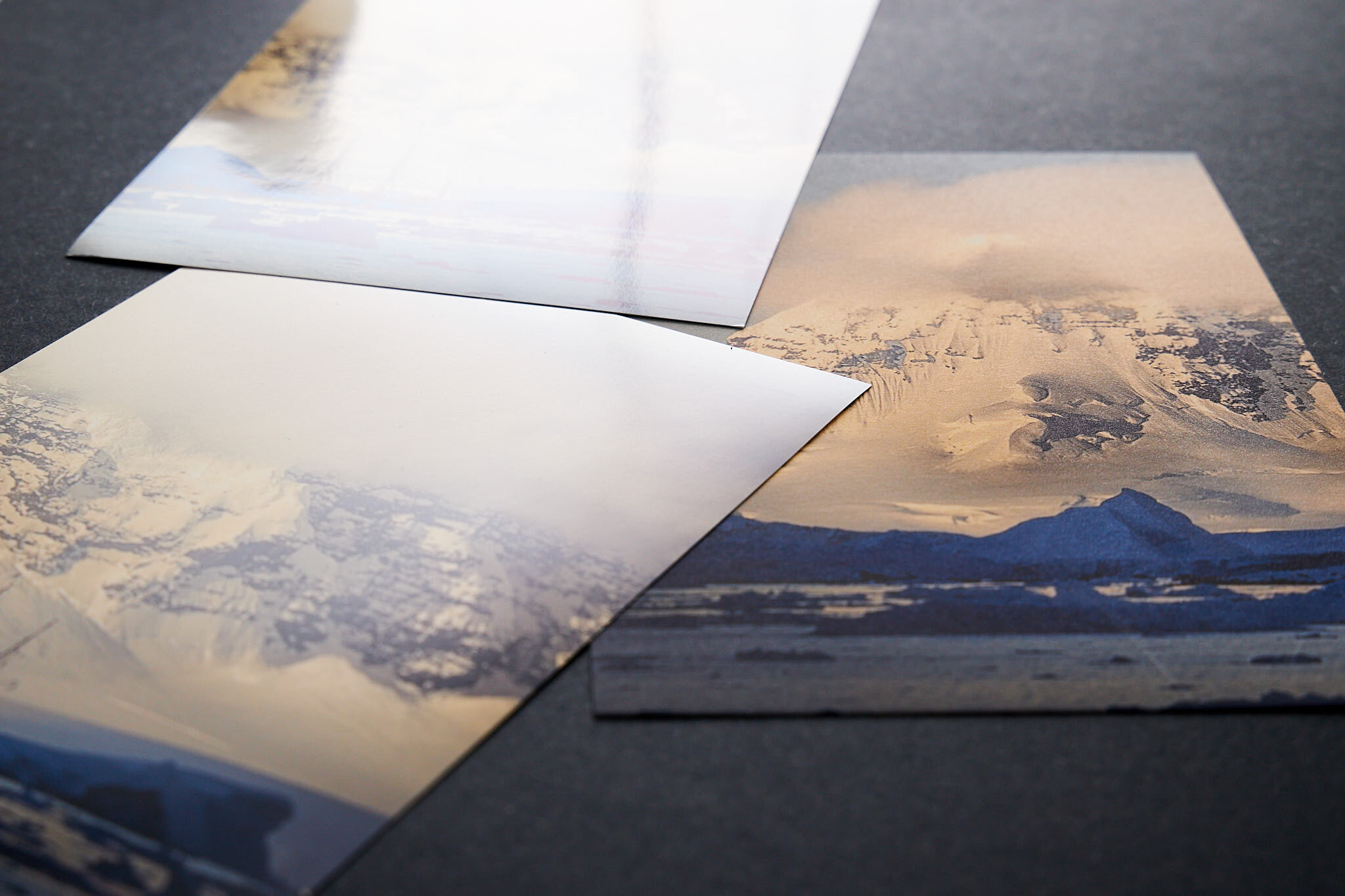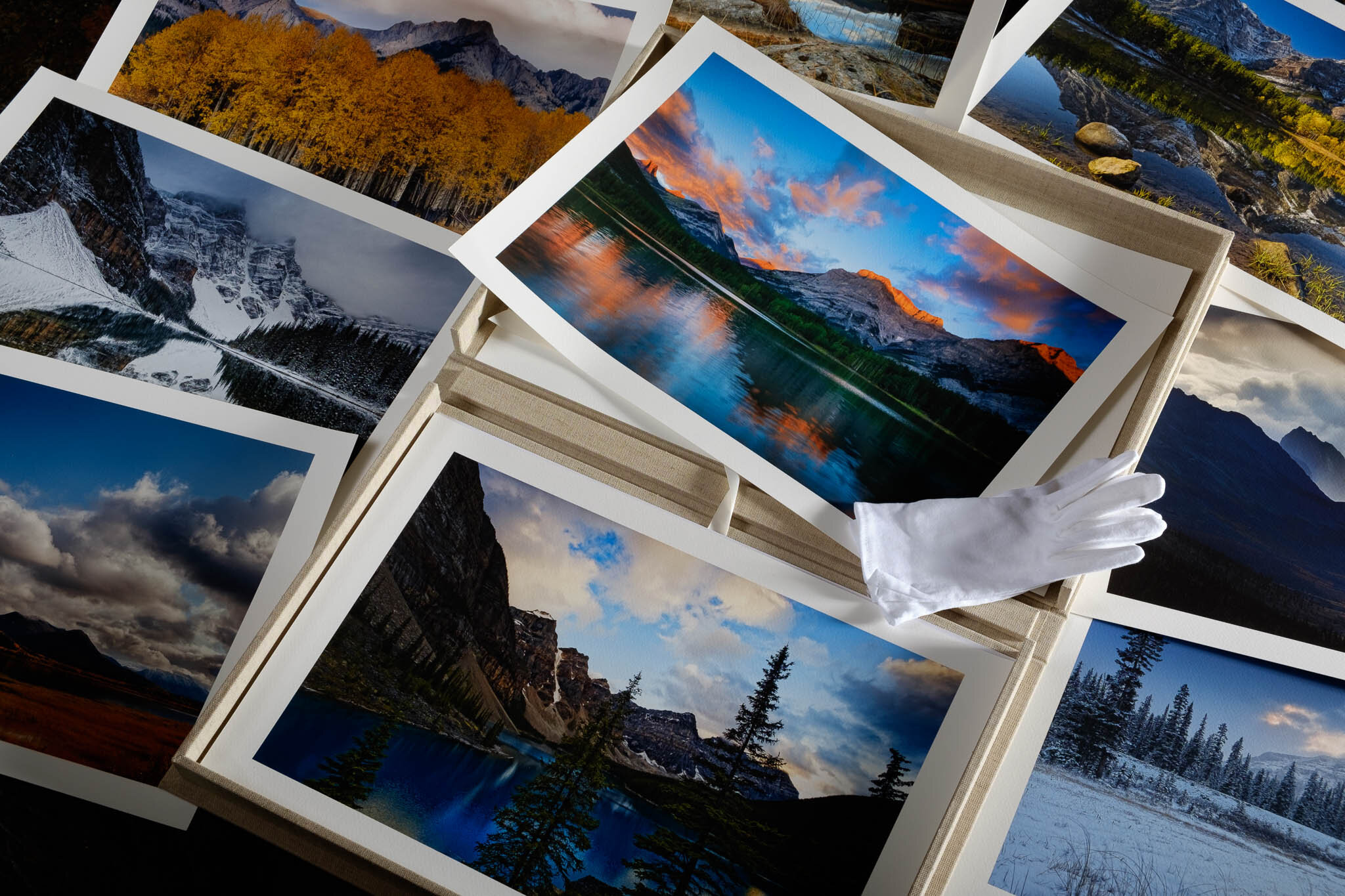Author: L. Picker
04 Nov 2020
If you’ve not downloaded your free copy of the comprehensive guide to fine art printing with Lightroom, get it now!
We’re often asked by photographers who print whether they should fixative spray their fine art prints and, if so, what spray to use. Admittedly, this is somewhat of a loaded question and requires some background to answer fully. If you follow the path I’ll lay out here, I think you’ll come to a good understanding and a choice that will work for you.
Background First
I’ll set the stage by addressing a follow-up question to “Should I spray my prints?” That is, “Should I spray my glossy prints as well as my matte prints?”
The general rule of thumb is that if you are not placing your matte paper print behind UV glass, then it should be sprayed with a quality varnish. That is not the case with glossy or semi-gloss papers, as you’ll see.
The resin coatings on glossy papers are very sensitive to varnishes and will invariably lose some of their gloss when sprayed, no matter the quality of the spray. Our tests over the years have reinforced that. However, we’ve heard of situations where photographers have intentionally sprayed their glossy prints to achieve the level of glossiness they prefer. This would take a lot of practice.
Further, if you plan to hang a glossy print not behind glass, in a room exposed to sunlight, wether direct or indirect, the print will degrade over time, often in a matter of months.
So, while we included glossy papers in our test, the findings that any varnish will degrade the glossiness is no surprise. We just wanted to address the question of whether all papers should be sprayed.
Our Research
Since print sprays are such a frequent question, and to satisfy our own curiosity and ability to advise our readers, we began several years ago to carefully research the issue. We make several hundred fine art prints each year in our studio. Over the years we have purchased many different sprays and tested them on a variety of papers.
The fact is that not all print sprays are created equal. Ingredients and relative percentages of them in the formulation vary. Spray patterns and particle size varies. Different sprays can create very different effects on identical prints.
It’s important to understand that while we’ve tested several different brands, we have not tested all, so we can’t categorically say that a certain price range or list of ingredients is better than others. What we can and do recommend is that you try sprays on some test prints and carefully determine for yourself what works.
One bit of consumer advice is this: you stand a better chance of buying a quality varnish if it is sold under the brand name of a major, respected paper company. They have a stake in the game of ensuring you will get the best prints possible. If the paper company does not sell a self-branded spray, but recommends a third-party brand, stick to that recommendation.
Method
Obviously we can’t reproduce for you all the research we have done over the years. Instead, we recently tested a typical Brand X spray that is heavily advertised online and compared it with Moab Desert Spray. I won’t reveal the name of the Brand X spray, but I assure you it is typical of many others in that category that we tested.
We printed the same image on Moab Entrada Natural (a matte paper), Juniper Baryta Rag (a satin/semi-gloss paper) and Moab Slickrock Pearl (a super glossy paper). We then cut the images in half (to save paper).
We then sprayed one set of all three papers with Moab Desert Spray, and another set with Brand X. A control set was left unsprayed.
Each of the sprayed prints received two full coats, as recommended by the manufacturers. It should be noted that Brand X recommended more than two coats, but when we tried that the negative effects we documented (see below) were more pronounced, so we standardized on two coats.
The Evidence
Note: Demonstrating spray effects on a print using an image on a monitor is challenging and the following images do not fully show the differences I mention below.
Our setup was simple; three rows of three prints. One was the control set, another was the Moab Desert Spray and the third was Brand X spray.
Moab Desert Spray vs Control.
Matte paper. Moab Desert Spray does an excellent job on the matte paper, preserving the blacks very well. It is invisible on the matte paper, with no haze or color cast. In our own studio we typically spray two coats of Desert Spray on our matte prints, unless they will soon be framed behind UV glass.
Satin/Semi-gloss paper. The same can be said for the satin/semi-gloss paper. Blacks are preserved but, as expected, there is a very slight dulling effect on the semi-gloss coating. However, when we showed the sprayed print to professional photographers they did not notice the dulling, until they placed it side-by-side with the control print.
High gloss paper. With the high gloss print there is an obvious dulling effect, although some observers might still rate it in the acceptable range. In effect spraying a very glossy print turns it into a semi-gloss print at best.
Brand X vs Control. In this set we compared Brand X spray with the controls.
Matte paper. We can immediately see the effect this spray has on the blacks, reducing the D-Max and trending them toward a noticeable washed-out appearance. There is also a visible, distracting mottled coating that is apparent on closer inspection.
Satin/Semi-gloss paper. Now the effects of Brand X are quite apparent. The glossiness is eliminated, blacks are muted, and there is a distinct objectionable rough and whitish mottled coating on the print that you can feel when you run a finger over it.
High gloss paper. As they say, fuggedaboudit! The print is completely ruined. The glossy coating is gone, blacks are subdued and a nasty white coating covers the print. Unfortunately, Brand-X turns everything into an ugly, low D-max matte print. You can see the effect close-up in the B&W description below.



























